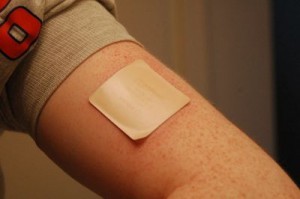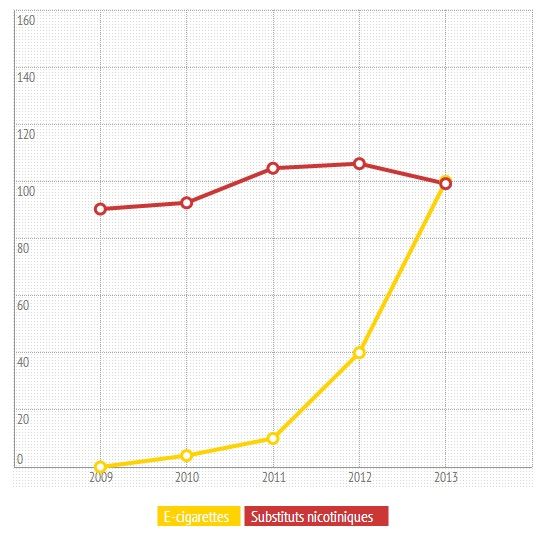How E-Cigarettes Are Killing the Nicotine Patch Market in Europe
Nicotine patches, gum, lozenges and other nicotine replacement therapy are not as popular as they used to be with smokers trying to quit. According to the latest market data from France and other European countries, sales have dropped dramatically, and e-cigarettes are to blame.
 Ever since the popularity of electronic cigarettes started to rise worldwide a couple of years ago, everyone rushed to predict their effect on the global tobacco industry, with some analysts predicting e-cigs would surpass tobacco cigarettes in sales in the next 10 years. But as Big Tobacco realized fighting the new trend was a losing battle, they ultimately decided getting a piece of this lucrative market would be much more profitable. The three major tobacco companies in America have all launched their own e-cigarette brands, and those in Europe have announced plans to develop e-cigs of their own or acquire existing brands. It is now estimated that tobacco companies will use their vast market experience, the well-established supply chains and deep pockets to take control of most of the e-cig sector in the next few years.
Ever since the popularity of electronic cigarettes started to rise worldwide a couple of years ago, everyone rushed to predict their effect on the global tobacco industry, with some analysts predicting e-cigs would surpass tobacco cigarettes in sales in the next 10 years. But as Big Tobacco realized fighting the new trend was a losing battle, they ultimately decided getting a piece of this lucrative market would be much more profitable. The three major tobacco companies in America have all launched their own e-cigarette brands, and those in Europe have announced plans to develop e-cigs of their own or acquire existing brands. It is now estimated that tobacco companies will use their vast market experience, the well-established supply chains and deep pockets to take control of most of the e-cig sector in the next few years.
But while tobacco companies seem to have found a way to cut their losses, and maybe even increase their profits, major players from the pharmaceutical industry have been hit badly by the vaping revolution. Giants like GlaxoSmithKline (GSK), the maker of Niquitin products, are struggling to compete with electronic cigarettes, which smokers trying to quit seem to find more appealing. In France, the latest data shows nicotine replacement product sales have dropped by 6.6% in 2013, putting the total market turnover at under 100 million euros (99.2 million, to be exact) for the first time since 2010. Sophie Ragot, marketing manager at GSK laboratories confirms the latest figures, and adds that the situation of the NRT market in the last quarter alone is even worse. She claims sales in this time frame have dropped by 17% in general and 35% in the case of nicotine patches. The situation is very similar in other European countries as well, and I’m sure NRT sales in the US aren’t what they used to be either.
Although there are those who don’t necessarily see a link between the drop in sales of NRT products and the rise in popularity of electronic cigarettes, for Sophie Ragot things are very clear. “Patches have been suffering seriously since the summer of 2013, just when e-cigarette shops started to multiply in France,” the GSK manager told French website Challenges. Backing up her theory, pharmacies located close to shops selling electronic cigarettes and vaping supplies are reporting a steep decline in nicotine replacement therapy sales.
Apparently smokers looking to quit are discouraged not only by the low rate of success with NRTs, but also by the long course of treatment – between 3 and 6 months, and having to consult a doctor to find the optimal nicotine dose – whereas e-cigarettes can be bought and used pretty much anywhere.

Photo: Challenges.fr
Predictions for the nicotine replacement therapy sector in France are bleak, to say the least. Experts are expecting double-digit drops in sales for 2014, followed by a market stall in 2015. “The worst part is we don’t yet know how to act in relation to this social phenomenon,” Sophie Rago said. “We don’t know very much about e-cigarette regulations”.
Although the French Government has announced its intentions to ban electronic cigarettes in public places in the next two years, the country’s Haute Autorité de Santé (High Health Authority) has recently issued an official notice that the use of electronic cigarettes by smokers refusing to try conventional nicotine replacement therapy “should not be discouraged” by doctors, as they are believed to be less dangerous that conventional cigarettes.
Photo credit: Wikimedia commons
















